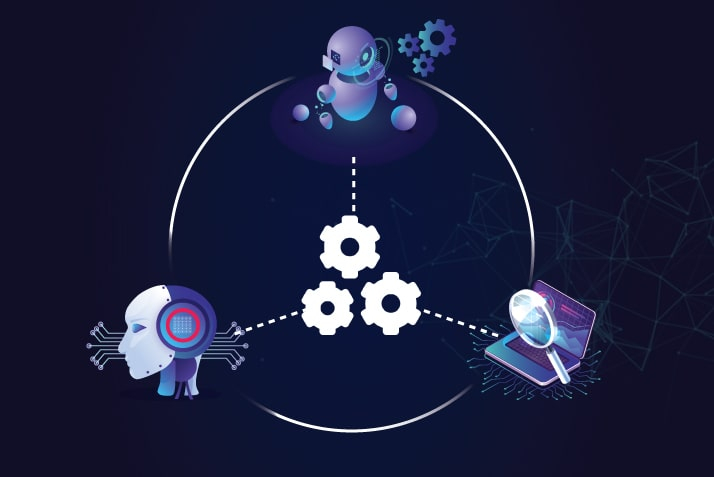Key metrics to measure success in your Digital first initiative and transformation progress
We have seen the importance of adopting a Digital first engineering approach, the challenges faced by leaders, and the role of strategies in our previous blogs. Another factor that plays a significant role in the success of any Digital first initiative is having a proper metric system. These huge transformational processes involve a lot of time, resources, and cost - if these are not managed and measured in a timely fashion, enterprises can end up getting a hit on their bottom line. This blog will throw more light on the same.
The role of metrics in your Digital first adoption
According to a Gartner report, nearly half of CEOs lack a proper metric system for measuring digital transformation progress. Organizational leaders can use metrics to detect and correct unexpected performance, identify areas for improvement, and modify their strategy as a result. Furthermore, those in positions of leadership must be able to demonstrate to stakeholders, customers, and employees the actual commercial consequences of digital transformation.
Organizations that communicate to their employees about what they are changing, why they are changing, and why these changes are important are more likely to have successful transformations. This also helps organizations have a faster cultural shift towards attaining a Digital first organization.
Defining the metrics that matter most
Once the ideal state of the process is decided and with proper metrics in place, makes it feasible for the project leaders to measure and alter the inference made, but companies undergoing large transformations must be resilient and wait for longer durations to see measurable success. Management philosophy also believes that what is measured gets managed. They, therefore, form the basis of control in any organization.
Agility: Automation and cloud technologies enable organizations to quickly become scalable to the growing needs of the employees and customers, where automation focuses on improving the internal processes making employees more productive, and cloud-based products can offer better performance with lower downtime. Cloud-native technologies and automation can provide the agility that businesses will want to stay competitive.
Customer retention and acquisition rate: Digital first technologies provide better digital experiences and seamless transactions throughout the buyers’ journey which in turn improves customer retention through loyalty and new customer acquisition through word-of-mouth. Companies can look at how well they are successfully converting people to try a product or service from trial to repeat use and measure their transformation efforts.
Employee retention: During this period of great resignation, one of the major challenges of enterprises is to retain the talent pool, especially with niche technologies. Transformation efforts focusing on improving the employee experience and modernizing workplaces should ideally improve employee performance, boost morale, and bring about innovation. In due course, these should have a direct impact on employee retention – hence metrics related to measuring employee retention matters.
Risk Analysis: Adding one or more technologies and with data in play there are higher chances of vulnerability, metrics such as MTTF, MTTR, and MTBF can help measure the security posture of your organization. While adopting new technologies, it is essential to ensure that these metrics are in control.
Measuring the success of your Digital first Strategy
It’s critical that IT organizations and their business stakeholders set up key metrics of success that align with new digital goals. Two pivotal reasons why enterprises should measure business transformation are
Typically, Organizations measure success in the form of customer satisfaction scores, revenue growth, employee retention, and productivity. For the digital transformation to be impactful, companies should set the right goals and KPIs to measure Digital first qualitative analysis. Some of the key metrics are
- Continuous business value realization: Ensure the transformed process is continuously measured to go beyond the value it was optimized for and to infer the effect of other the transformation that happens in its adjacency
- Percent of processes designed for Native Digital: This will unify the silo Digital first transformation and align the common native digital strategy to drive a better business experience
- Percent of business processes enabled by AI: Digital transformation is not just automating repetitive stuff, how much self-learning all this process has, and how it compliments to provide a truly great business experience.
- Percent of workload and payload on cloud and its ROI: This enables organizations to scale & support any form of growth and infrastructure, removes all the bottlenecks, and has an ROI attached to it.
- Connected enterprise maturity: This is an important measure for the COO and CTO to measure how seamlessly they are interconnected to build digital ecosystems for the business.
Final Summary: Metrics help to translate expectations into a set of figures that can be used to properly map progress and performance. They also provide the necessary insights for the leaders to analyze, mitigate challenges and alter strategies accordingly, and the best metrics will provide actionable feedback to enhance the organization’s Digital first strategy.
iOPEX has enabled large-scale transformations for fortune 500 companies with specific use cases across different business functions. From simple rule-based automation to involving technologies like process mining, RPA, ML/AI, the team has the technical expertise to build Digital first organizations. Talk to us and learn more about the use-cases and how they can benefit your organizational goals. Email: [email protected]














